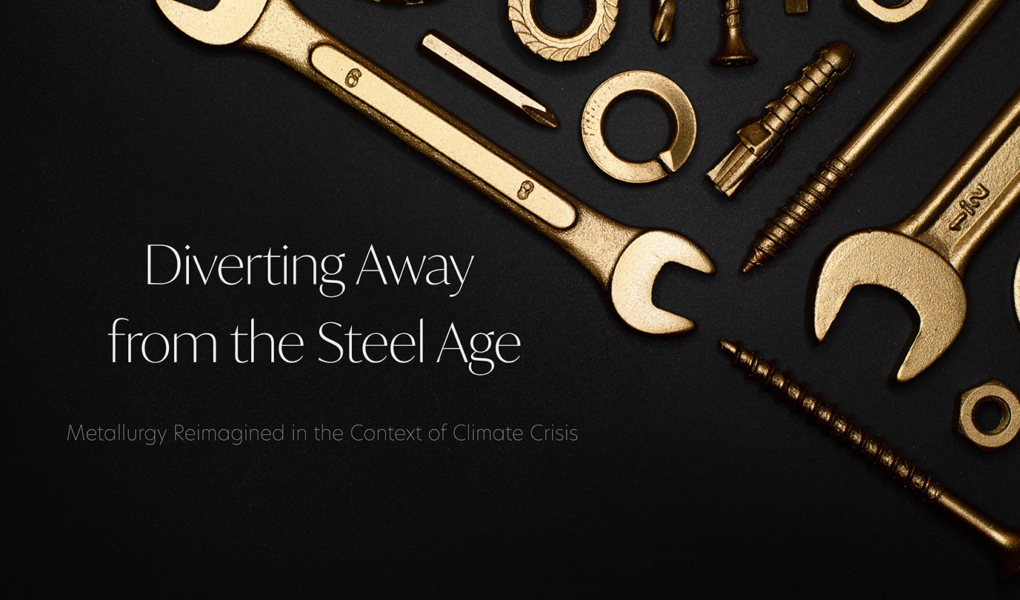Abstract
Steel is an integral part of society, having countless purposes ranging from being the building materials for buildings in our cities to the kitchen forks on our dinner tables. While its relevance emphasizes the dire need to include steel in the future of the modern world, the production process emits an immense amount of carbon emissions. These emissions force us as a society to question the future approach to steel production. This article dives into the ground-breaking technology of Hydrogen Breakthrough Iron Technology (HYBRIT), and how it compares to the previously used steel production process involving a hot blast furnace. The article also covers the current legal obligations of companies and countries to decrease their carbon emissions via the Paris Climate Accord, and how this technology will contribute to reducing carbon emissions by nine percent of annual emissions. This technology will be widely available by 2026 to the average consumer.
“Steel-ing” the Heart of Many: Why We Need Steel
Steel has played an essential role in many aspects of daily life throughout the twentieth century. Consequently, its widespread use within society explains its significant amount of carbon emissions, accounting for 9 percent of greenhouse gas emissions each year due to the large quantities of fossil fuels present throughout steel production. As companies and countries work to address the pressing climate crisis, a new technology known as Hydrogen Breakthrough Iron Technology (HYBRIT) involving fossil fuel-free steel production has emerged. HYBRIT production involves several elements of traditional steel production, but has largely diverted away from most of the technology used. Given that no major obstacles occur in production, this “green steel” is predicted to be on the market by 2026, and integrated into products, like cars, by 2036.
Fossil Fuels in Gas Tanks and Structure Itself: Breadth of Carbon Emissions in Production
As the twenty-first century presses on, carbon-neutral technology is now under more inspection than ever from the public eye. When a technology is carbon-neutral, it produces net zero carbon emissions, meaning emissions caused by production are offset by a reduction in emissions throughout the technology’s use or that there are no carbon emissions for the technology [1].
Though it is primarily up to individual action of large corporations to come to the ethical conclusion to minimize greenhouse gas emissions, the Paris Climate Accord (PCA) of 2016 legally binds countries to enforce these efforts [2]. The PCA’s purpose is to reduce global warming to 1.5 degrees Celsius per year through “economical and social transformation.” The PCA offers five-year goals for each of the 196 participating countries to attain carbon neutrality by 205. The PCA’s requirements have prompted a reevaluation, particularly relevant to the transportation and power industries, to produce carbon neutral alternatives; the motivation of the development of HYBRIT can largely be attributed to the PCA.
Although steel production may not be the first carbon emissions coming to mind, such as the emissions of using a gasoline-powered car, the emissions created during steel production is approximately 2.8 billion tons worth of carbon dioxide. These emissions correspond to a production value of 1800 million tons of steel per year. Moreover, the yearly demand of steel is expected to increase nearly 50 percent from approximately 1800 million tons in 2018 to 2500 million tons in 2050 due to both an expected population growth and incorporation in technology products, such as the iPhone and computers [4]. To meet the Paris agreement carbon emission standards, the carbon emissions from steel production must decrease to approximately 400 million tons per year, while also accounting for the dramatic increase in production value. Steel represents a significant portion of the annual carbon emissions and the material can be 100 percent renewable. Thus, steel offers an incredible opportunity to reduce the carbon footprint of numerous industries.
What is Steel Production and Why It Works
In contrast with HYBRIT’s carbon neutral technology, the steel industry has emitted significant amounts of carbon dioxide since its birth in the twelfth century. The iron and steel industry is one of the oldest industries in the modern world. Iron has evolved throughout its rich history dating back to the twelfth century, transitioning from wrought iron to bar iron in the seventeenth century [3]. Throughout the seventeenth century, Sweden exported more than 40 thousand tons per year due to the increase of globalization, accomplished using an open hearth finerty. However, this method became much less effective compared to Britain’s less expensive iron production developed in the mid-19th century. A prominent ironworks businessman Gustav Ekman visited Britain and observed differences among the two countries’ competitive iron working techniques [3]. However, once he returned to Sweden, the Lancashire furnace had been developed, promoting an increase in steel production units and profit. This new method completely took out the open hearth furnace’s presence in Sweden; smaller ironworks were unable to house these larger furnaces, forcing many smaller ironworks to close.
Later in the 1850s, the use of steel production skyrocketed, bringing about the “Steel Age” due to the technological and industrial shifts that took place in the Industrial Revolution that have continued on into the twenty first century. Since the 1850s, Sweden has maintained its dominance in steel production due to cheap electricity, abundance of natural resources, and the availability of high-grade iron ores [4]. Largely, the iron and steel industry has proven resistant to transitions due to the “energy and capital intensive production structure with high entry barriers” [3]. Therefore, the change to the industry must be completely new, rather than a repurposing of old steel techniques, due to the well-established steel production companies unwilling to give up their monopoly over the industry. To reinforce this industry revision, three major Swedish companies (mining company LKAB, steel producer SSAB, and power company Vattenfall) have partnered to bring about this carbon-neutral change [3]. Financially motivated by Sweden’s rich history in metallurgy, these companies pioneered the HYBRIT technology to replace carbon dioxide emissions with water.
Blast Furnace: The Need to Blast Out of the Past
Currently, the blast furnace is the dominating technology used to produce steel. The blast furnace, also known as the Lancashire furnace, is a vertical shaft furnace that produces liquid metals by pressure under the bottom of the furnace with a mixture of metallic ore, coking coal, and flux (limestone blend) fed into the top of the furnace [5]. The blast furnaces are approximately 120 feet in diameter, and a single furnace can produce almost 10 thousand tons of pig iron daily [5]. These furnaces are used primarily to produce pig (crude) iron, which is later processed into steel. Coking coal provides the carbon which is used throughout the traditional steel production process, and is the primary driver for carbon emissions [5]. The carbon is reduced at an extremely high temperature, approximately 1600 degrees Celsius, while in the presence of limestone [5].
The Lancashire furnace is composed of three main areas, which are the hearth, the bosh, and the shaft (the stack). These areas can be viewed in Figure 1. The visual below depicts the blast furnace at right of a hot-blast stove, highlighting the stack, bosh, and hearth. As the figure shows, the entire furnace is lined with carbon refractory blocks, which protect the furnace shell from the high temperatures within.

Figure 1. Hot-blast stove (left) and blast furnace (at right) [5]
These three components host the furnace “burden,” which are all the materials necessary to produce iron ore: coking coal, iron-ore pellets, and limestone flux [5]. These materials travel down the shaft and into the bosh where they are heated to high temperatures and undergo chemical reactions to produce liquid iron, and slag. Slag is a byproduct of these reactions and is composed of the limestone flux, ash produced from the coking coal, and any impurities from interactions with the ore and flux [5]. After this production takes place, heated air is pumped into the bosh via nozzles and reacts with the coking coal to produce carbon monoxide that runs throughout the furnace. The molten iron accumulates within the hearth, and the slag is removed via the taphole to eradicate limestone flux from the furnace.
Throughout its operation, the furnace contains alternating layers of coking coal, iron ore, and limestone. The coke is burned at a rapid rate with air traveling from the tuyere, pictured in Figure 1. The oxygen-containing iron, iron oxides, present within the ore is reduced to molten iron using the carbon monoxide created from the coke [5]. Hot gasses rise through the furnace zone from the bosh and stack, shown in Figure 1, and exit through ducts at the top of the furnace. While this occurs, the gasses heat material in the stack. At the end of this process, iron ore (steel) will be produced and processed accordingly to be used in production of appliances.
Entering the New Wave of “Green Steel”
While it would be ideal to repurpose a Lancashire furnace to reduce its carbon emissions, it is impossible to use it without coal, prompting a need for a new technology [5][6]. However, elements of steel production using the Lancashire furnace and HYBRIT technology will remain the same. The iron ore pellets used in the blast furnace will be continued within HYBRIT production. However, the coking coal and limestone flux are replaced with water, which directly removes carbon emissions from the steel production process. The iron metal is produced with hydrogen gas, which is the main byproduct; hydrogen gas, unlike carbon, does not negatively impact the environment on a large scale [6]. The hydrogen gas is produced with electrolysis of water using fossil-free electricity. The fossil-free electricity, solar or hydropower, is already standard practice in Sweden as the country primarily uses green energy. As seen in the figure below, the reaction itself is quite simple, only involving four components.

Figure 2. HYBRIT reactants and byproducts [6]
In addition to the simplicity of the components involved, the production process is straightforward as well. The LKAB iron is taken to a SSAB facility where the iron production takes place. The Vattenfall electricity powers the entire process. The production itself is consistent with the process described with respect to the blast furnace, except replacing the coking coal and limestone flux with high temperature hydrogen and renewable energy. The iron ore is then converted into steel by extracting the impurities from the ore and converting into steel, following the same process as the blast furnace. The HYBRIT production process begins with an intake of the iron ore into the iron ore pellet production process, completed at LKAB’s pellet plant [7]. From the pellet plant, the iron ore pellets are converted into sponge iron, which is a porous, solid product of pure metallic iron created through the removal of oxygen from the metal using electrolysis in the reduction shaft, the gray object in Figure 3 [8][9]. Using a Lancashire furnace, this process would be completed using coking coal; however, with HYBRIT, this process is completed using hydrogen, eliminating carbon emissions from the creation of sponge iron [8]. The hydrogen used in the reduction process from iron pellets into sponge iron is stored underground, and is used to stabilize the energy used within this process [10]. Lastly, this iron is further reduced to steel, and taken off to be packaged appropriately. This process can be viewed in Figure 3.

Figure 3. HYBRIT Production Process [6]
Using the process in Figure 3, HYBRIT began production in 2020, despite their initial design plans being finalized in 2020. However, the first batch of HYBRIT steel has already been produced and tested in early 2021. SSAB officials have announced that their goal is to deliver fossil-free steel to the market and demonstrate the technology on an industrial scale as early as 2026 [11]. The announcement of renewable steel has drawn attention from around the globe, dramatically increasing stock prices for the company. Furthermore, strategic partnerships with companies like Volvo and Mercedes-Benz have already been publicly announced since the first batch’s completion in late 2021. The first batch of HYBRIT steel is already being integrated in new passenger car prototypes by both Volvo and Mercedes-Benz. Mercedes-Benz expects that by 2039 its new passenger car fleet will become carbon-neutral along the entire chain, from production to fuel use [12].
Future of the Steel Consumer
While no official products are currently available to international consumers, HYBRIT will be a technology to keep an eye out for on the market and to consider when purchasing a new vehicle or refrigerator. For the next several years, however, we as consumers can attempt to use products for their maximum lifetime and find applicable electronics programs to minimize carbon emissions in the steel production process. Moreover, minimizing the amount of purchases of technology can reduce each individual’s carbon footprint. Although it is the responsibility of a company to provide sustainable products, we as consumers can continue to look for sustainable alternatives to steel until fossil-free steel, such as HYBRIT, becomes widely available.
References
[1] “Carbon Neutrality.” carbonfootprint.com. https://www.carbonfootprint.com/carbonneutrality
.html (accessed Sept. 6 2021).
[2] United Nations, “The Paris Agreement,” presented at the United Nations Framework
Convention on Climate Change, Paris, FRA, Dec. 12, 2015.
[3] “Potential transitions in the iron and steel industry in Sweden: Towards a Hydrogen-based
future?” sciencedirect.com. https://www.sciencedirect.com/science/article/
pii/S0959652618314823 (accessed Sept. 6 2021).
[4] M. Pei, M. Petäjäniemi, A. Regnell, and O. Wijk, “Toward a Fossil Free Future with
HYBRIT: Development of Iron and Steelmaking Technology in Sweden and Finland.” in MDPI Metals, Aug 2020 [online]. Available: https://www.mdpi.com/2075-4701/10/7/972.
[5] “Blast Furnace.” britannica.com. https://www.britannica.com/technology/blast-furnace
(accessed on Sept. 6 2021).
[6] “HYBRIT: Fossil-Free Steel. Summary of Findings from HYBRIT Pre-Feasibility Study
2016-2017.” https://www.hybritdevelopment.se/en/.
[7] “HYBRIT: Fossil-Free Pellet Production.” hybritdevelopment.se.com. https://www.hybrit
development.se/en/a-fossil-free-development/fossilfree-pelletproduction/ (accessed on Dec. 3 2021).
[8] “HYBRIT: Pilot Scale Direct Reduction.” hybritdevelopment.se.com. https://www.hybrit
development.se/en/a-fossil-free-development/direct-reduction-hydrogen-pilotscale/ (accessed on Dec. 3 2021).
[9] “HYBRIT: Direct Reduction on a Demonstration Scale.” hybritdevelopment.se.com.
https://www.hybritdevelopment.se/en/a-fossil-free-development/direct-reduction-hydrogen-demonstrationscale/ (accessed on Dec. 3 2021).
[10] “HYBRIT: Storing Hydrogen.” hybritdevelopment.se.com. https://www.hybrit
development.se/en/a-fossil-free-development/direct-reduction-hydrogen-demonstrationscale/ (accessed on Dec. 3 2021).
[11] D. Kindy. “Fossil Fuel-Free ‘Green’ Steel Produced for the First Time.”
smithsonianmag.com. https://www.smithsonianmag.com/smart-news/green-steel-
produced-first-time-180978550/ (accessed on Sept. 6 2021).
[12] “Mercedes-Benz teams up with SSAB to explore fossil fuel-free steel for cars.” reuters.com.
https://www.reuters.com/business/autos-transportation/mercedes-benz-teams-up-with-
ssab-explore-fossil-fuel-free-steel-cars-2021-09-01/ (accessed Sept. 8 2021).




